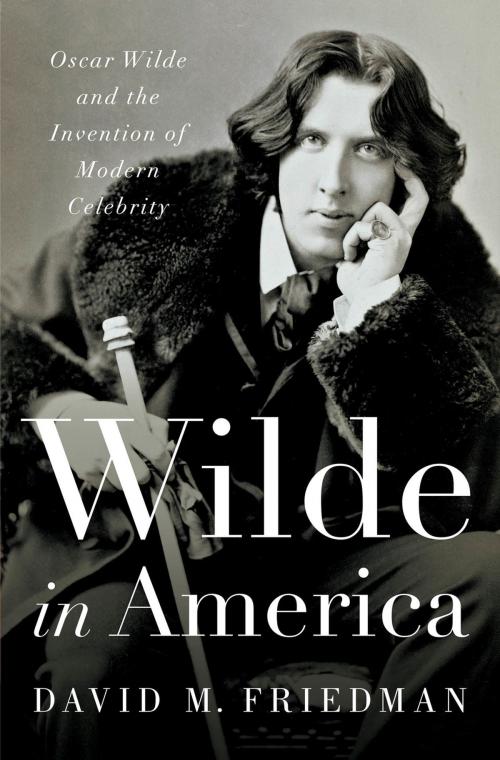| Author: | David M. Friedman | ISBN: | 9780393245912 |
| Publisher: | W. W. Norton & Company | Publication: | October 6, 2014 |
| Imprint: | W. W. Norton & Company | Language: | English |
| Author: | David M. Friedman |
| ISBN: | 9780393245912 |
| Publisher: | W. W. Norton & Company |
| Publication: | October 6, 2014 |
| Imprint: | W. W. Norton & Company |
| Language: | English |
The story of Oscar Wilde’s landmark 1882 American tour explains how this quotable literary eminence became famous for being famous.
On January 3, 1882, Oscar Wilde, a twenty-seven-year-old “genius”—at least by his own reckoning—arrived in New York. The Dublin-born Oxford man had made such a spectacle of himself in London with his eccentric fashion sense, acerbic wit, and extravagant passion for art and home design that Gilbert & Sullivan wrote an operetta lampooning him. He was hired to go to America to promote that work by presenting lectures on interior decorating. But Wilde had his own business plan. He would go to promote himself.
And he did, traveling some 15,000 miles and visiting 150 American cities as he created a template for fame creation that still works today. Though Wilde was only the author of a self-published book of poems and an unproduced play, he presented himself as a “star,” taking the stage in satin breeches and a velvet coat with lace trim as he sang the praises of sconces and embroidered pillows—and himself. What Wilde so presciently understood is that fame could launch a career as well as cap one.
David M. Friedman’s lively and often hilarious narrative whisks us across nineteenth-century America, from the mansions of Gilded Age Manhattan to roller-skating rinks in Indiana, from an opium den in San Francisco to the bottom of the Matchless silver mine in Colorado—then the richest on earth—where Wilde dined with twelve gobsmacked miners, later describing their feast to his friends in London as “First course: whiskey. Second course: whiskey. Third course: whiskey.”
But, as Friedman shows, Wilde was no mere clown; he was a strategist. From his antics in London to his manipulation of the media—Wilde gave 100 interviews in America, more than anyone else in the world in 1882—he designed every move to increase his renown. There had been famous people before him, but Wilde was the first to become famous for being famous. Wilde in America is an enchanting tale of travel and transformation, comedy and capitalism—an unforgettable story that teaches us about our present as well as our past.
The story of Oscar Wilde’s landmark 1882 American tour explains how this quotable literary eminence became famous for being famous.
On January 3, 1882, Oscar Wilde, a twenty-seven-year-old “genius”—at least by his own reckoning—arrived in New York. The Dublin-born Oxford man had made such a spectacle of himself in London with his eccentric fashion sense, acerbic wit, and extravagant passion for art and home design that Gilbert & Sullivan wrote an operetta lampooning him. He was hired to go to America to promote that work by presenting lectures on interior decorating. But Wilde had his own business plan. He would go to promote himself.
And he did, traveling some 15,000 miles and visiting 150 American cities as he created a template for fame creation that still works today. Though Wilde was only the author of a self-published book of poems and an unproduced play, he presented himself as a “star,” taking the stage in satin breeches and a velvet coat with lace trim as he sang the praises of sconces and embroidered pillows—and himself. What Wilde so presciently understood is that fame could launch a career as well as cap one.
David M. Friedman’s lively and often hilarious narrative whisks us across nineteenth-century America, from the mansions of Gilded Age Manhattan to roller-skating rinks in Indiana, from an opium den in San Francisco to the bottom of the Matchless silver mine in Colorado—then the richest on earth—where Wilde dined with twelve gobsmacked miners, later describing their feast to his friends in London as “First course: whiskey. Second course: whiskey. Third course: whiskey.”
But, as Friedman shows, Wilde was no mere clown; he was a strategist. From his antics in London to his manipulation of the media—Wilde gave 100 interviews in America, more than anyone else in the world in 1882—he designed every move to increase his renown. There had been famous people before him, but Wilde was the first to become famous for being famous. Wilde in America is an enchanting tale of travel and transformation, comedy and capitalism—an unforgettable story that teaches us about our present as well as our past.















